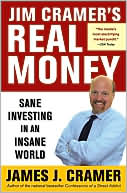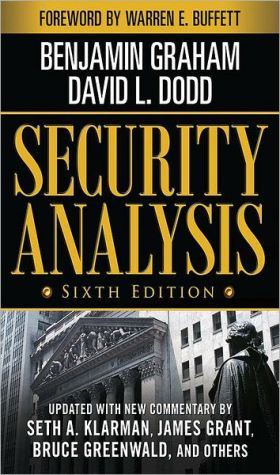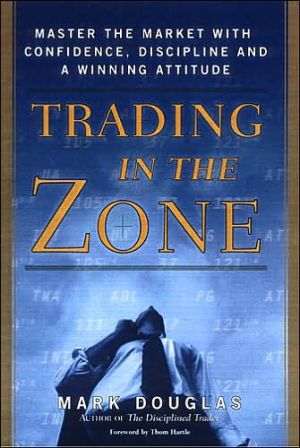Reading Price Charts Bar by Bar: The Technical Analysis of Price Action for the Serious Trader
While new technology and complicated theories promise to take your trading to "the next level," the truth is that long-term success in this field is rooted in simplicity. That's why Al Brooks has created Reading Price Charts Bar by Bar.\ With this book, Brooks—a technical analyst for Futures magazine and an independent trader—demonstrates how applying price action analysis to chart patterns can help enhance returns and minimize downside risk. Along the way, you'll discover the importance of...
Search in google:
While complex strategies and systems maywork for some traders, understanding price action is all you really need to succeed in this arena. Price action analysis is an effective app-roach to trading today's markets—whether you're involved in stocks, futures, or options. It allows you to focus on the process of trading without being overwhelmed by a complicated collection of trading techniques. And while this method may appear elementary, it can sig-nificantly enhance returns as well as minimize downside risk.One way to apply price action analysis to your trading endeavors is with chart patterns. Nobody understands this better than author Al Brooks, a technical analyst for Futures magazine and an independent trader for more than twenty years. Brooks discovered ten years ago that reading price charts without indicators proved to be the most simple, reliable, and profitable way for him to trade. Mastering that discipline is what made him consistently successful in trading. Now, with Reading Price Charts Bar by Bar, Brooks shares his extensive experience on how to read price action.At the end of the day, anyone can look at a chart, whether it is a candle chart for E-mini S&P 500 futures trading or a bar chart for stock trading, and see very clear entry and exit points. But doing this in real time is much more difficult. Reading Price Charts Bar by Bar will help youbecome proficient in the practice of reading price action—through the use of trendlines and trend channel lines, prior highs and lows, break-outs and failed breakouts, and other tools—and show you how this approach can improve the overall risk-reward ratio of your trades.Written with the serious trader in mind, this reliable resource addresses the essential elements of this discipline, including the importance of understanding every bar on a price chart, why particular patterns are reliable setups for trades, and how to locate entry and exit points as markets are trading in real time. Brooks focuses on five-minute candle charts to illustrate basic principles, but discusses daily and weekly charts as well. Along the way, he also explores intraday swing trades on several stocks and details option purchases based on daily charts—revealing how using price action alone can be the basis for this type of trading.There's no easy way to trade, but if you learn to read price charts, find reliable patterns, and get a feel for the market and time frame that suits your situation, you can make money. While price action trading doesn't require sophisticated software or an abundance of indicators, this straightforward approach can still put you in a better position to profit in almost any market. Reading Price Charts Bar by Bar will show you how.
Preface xiiiChapter 1 Price Action 1Trend Bars and Doji Bars 7Bar Basics: Signal Bars, Entry Bars, Setups, and Candle Patterns 11Signal Bars: Reversal Bars 13Signal Bars: Other Types 17Outside Bars 36The Importance of the Close of the Bar 42Exchange Traded Funds (ETFs) and Inverse Charts 45Second Entries 46Late and Missed Entries 49Chapter 2 Trendlines and Trend Channels 51Trendlines 51Micro Trendlines: Small, Steep Trendlines in Strong Trends 55Horizontal Lines: Swing Points and Other Key Price Levels 61Trend Channel Lines 63Dueling Lines: Intersecting Trendline and Trend Channel Line 68Chapter 3 Trends 71Two Legs 75Signs of Strength 76Common Trend Patterns 81Trend from the Open 82Reversal Day 86Trend Resumption Day 86Trending Trading Range Days 88Tight Channels and Spike and Channel Bull or Bear 91Stairs: Broad Channel Trend 95Chapter 4 Pullbacks 99First Pullback Sequence: Bar, Minor Trendline, EMA, EMA Gap, Major Trendline 101Double Top Bear Flags and Double Bottom Bull Flags 104EMA and Gap EMA Pullbacks 1082 HM: If Away from EMA for Two or More Hours, Then Fade EMA and First EMA Gap Bar 110Trend Day 11:30 Stop Run Pullback to Trap You Out 112Counting the Legs of a Trend 114High/Low 1, 2, 3, and 4 118Variations of High/Low 2 Setups 128Three Push Pullbacks 132Chapter 5 Trading Ranges 137Tight Trading Ranges 138Barb Wire 142Middle of the Day, Middle of the Range 148Big Up, Big Down 150Trading Ranges Setting Up Trend Reversals 152Chapter 6 Breakouts 155Breakout Entries in Strong Trend 156Breakout Pullbacks andBreakout Tests 158Chapter 7 Magnets 165Measured Moves Based on the First Pullback (AB = CD) 165Measured Moves on Breakouts Based on Thin Areas and on Flags 167Reversals Often End at Signal Bars from Prior Failed Reversals 171Other Price Magnets 172Chapter 8 Trend Reversals 175Trendline Break 184Trend Channel Line Failed Breakouts: Climaxes, Parabolas, and V Tops and Bottoms 187Signs of Strength in the First Leg of a Reversal 188Trends Reverse with a Test: Either an Undershoot or an Overshoot 190Double Top and Bottom Pullbacks 202Climax: Spike and Trading Range Reversals 207Climax: Three Pushes and Wedges (Trend Channel Line Overshoots and Reversals) 210Expanding Triangles 215Chapter 9 Minor Reversals: Failures 221Failed Signal and Entry Bars and One-Tick Failed Breakouts 222Failed High/Low 2 226Failed Higher High and Lower Low Breakouts 229Failed Trendlines and Trend Channel Lines 234Failed Reversals 239Failed Final Flags: Tight Trading Range 243Failed Final Flags: Huge Trend Bar 245Failed Wedges 247Failed Scalps: Five-Tick Failed Breakouts and Failure to Reach a Scalper's Profit Target 251Chapter 10 Day Trading 255Selecting a Market 256Time Frames and Chart Types 258Globex, Pre-Market, Post-Market, and Overnight Market 267Scalping, Swinging, Trading, and Investing 269Always in the Market 273Have at Least Two Reasons to Enter a Trade 275Entering on Stops 277Protective Stops and Getting Trapped In or Out of a Trade 281Chapter 11 The First Hour 289Patterns Related to the Premarket 291Patterns Related to Yesterday 292Trend Bar on Gap Open: First or Second Bar 302Gap Openings: Reversals and Continuations 303Trend from the Open or Trend from the First Bar 305Third Bar of the Day and the 15-Minute Close 310Strong Trend Bars in the First Hour Often Predict Strength Later in the Day in the Same Direction 311Opening Patterns and Reversals 313Double Bottom and Double Top Flags 317Trading Range Breakouts 319First Pullback 321Chapter 12 Detailed Day Trading Examples 325Chapter 13 Daily, Weekly, and Monthly Charts 331Huge Volume Reversals 343Chapter 14 Options 347Chapter 15 Best Trades 353Major Reversals 357Minor Reversal Scalps during Trading Range Days 368Pullbacks in a Strong Trend 369Intraday Stocks 374Trading Guidelines 381Glossary 387About the Author 395Index 397








